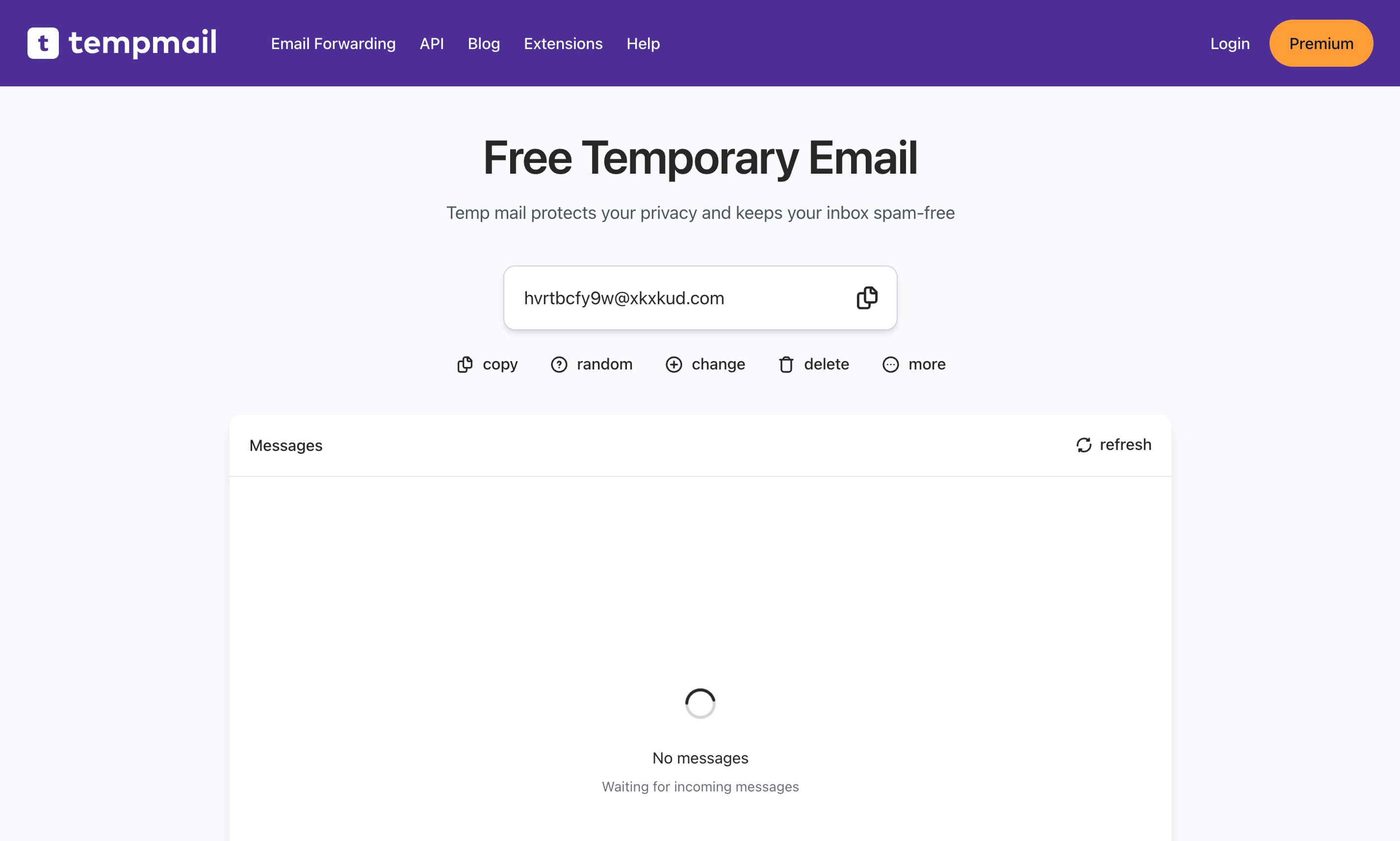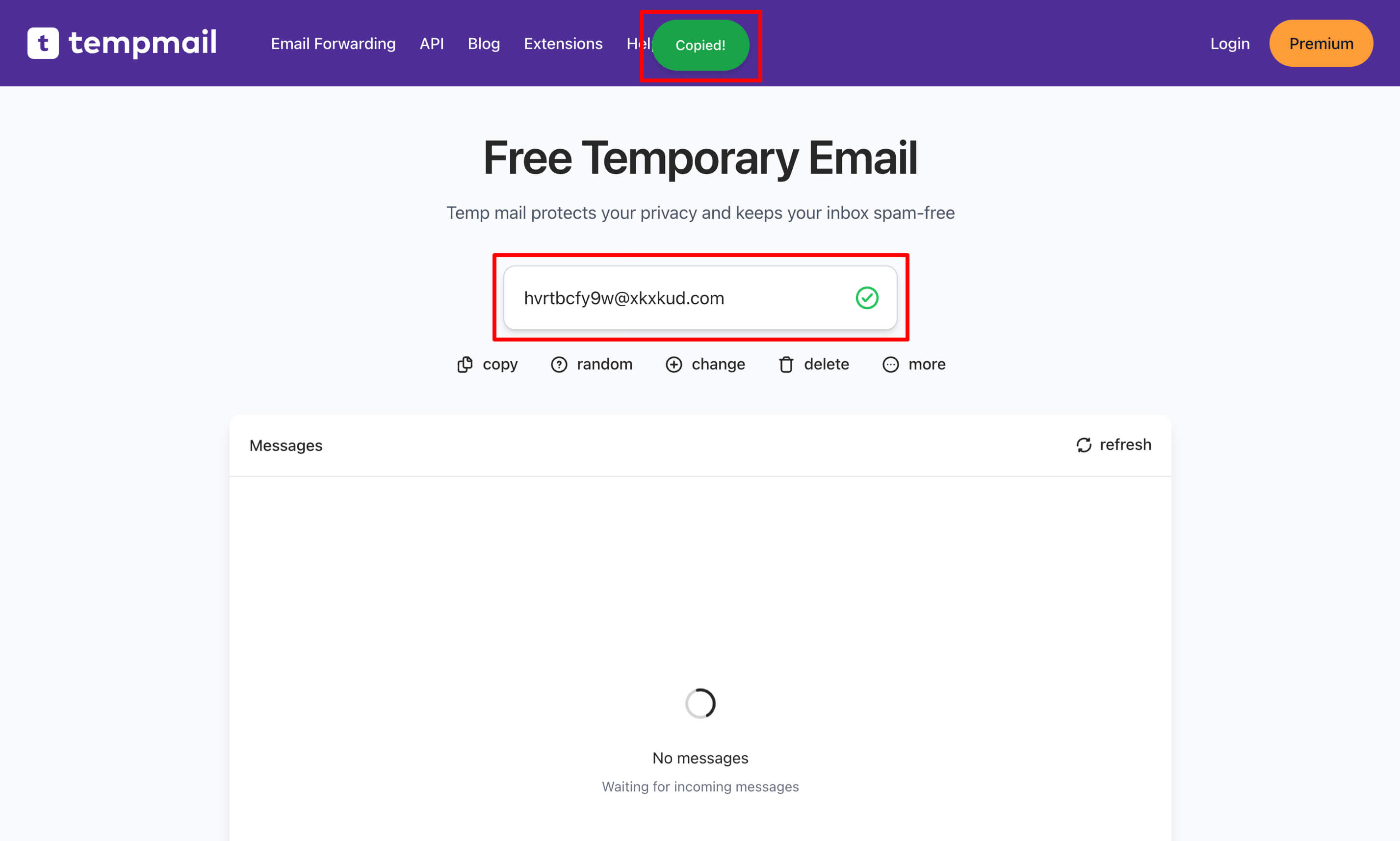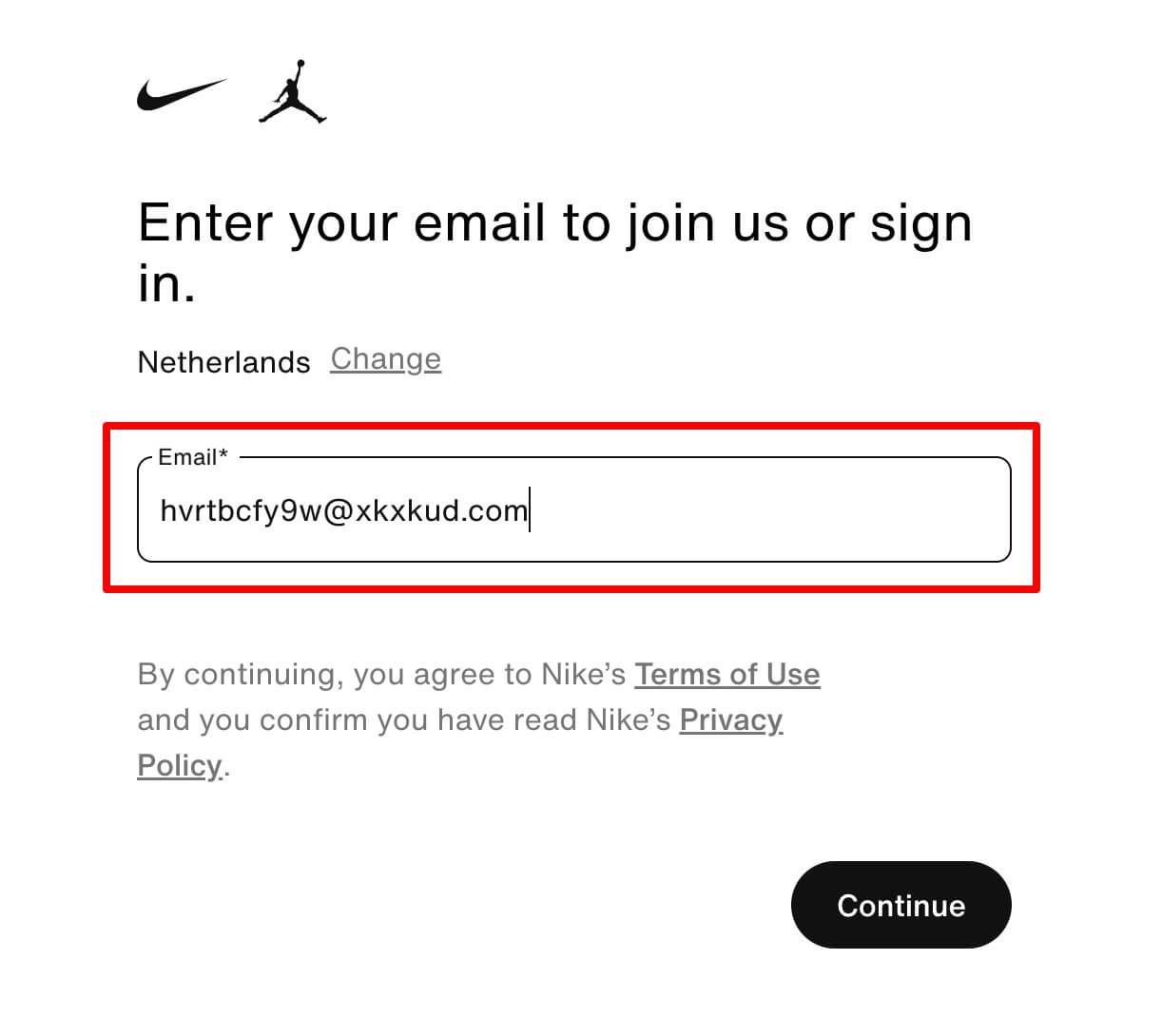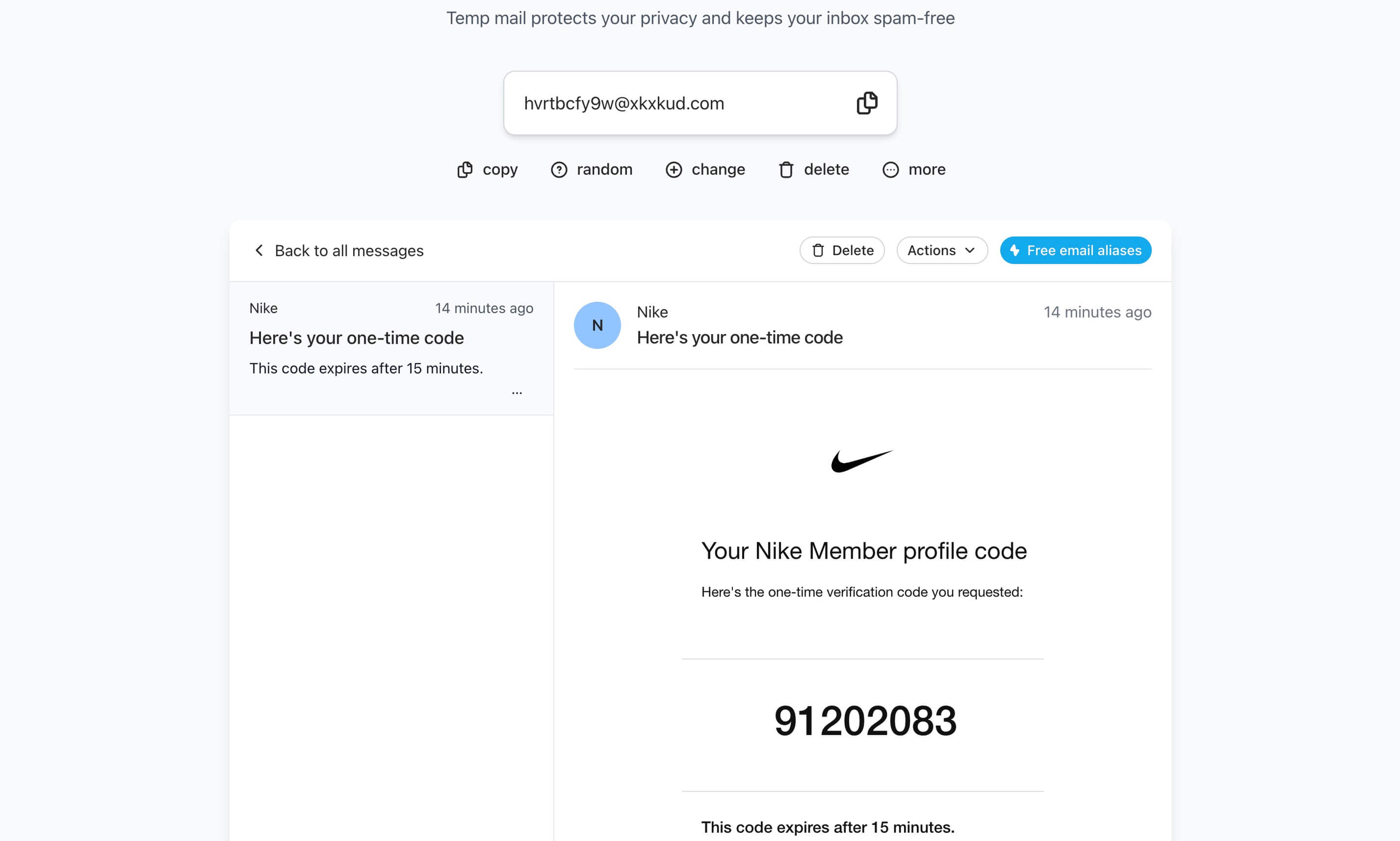What is Temp Mail? Complete Guide to Temporary Email
Temp Mail (temporary email) is a disposable email address you can create instantly, use for a short time, and abandon — all without exposing your real inbox. Want to know more about it? Let's dive in!
Picture this. You’re about to download a free eBook, try out a service, or grab a discount code everyone wants.
The catch is they want your email. Oof.
You hesitate because you already know what comes next: your inbox gets flooded with promos, endless “exclusive offers,” and slowly turns into a junkyard. Sound familiar?
Temp mail truly is an easy fix for this. Also called temporary email, this is basically a throwaway inbox you can create in seconds. You don’t fill out forms, you don’t set a password, and you don’t commit to anything. Just use it, grab what you need, and let it vanish. Simple.
If you have ever wondered what temp mail is and why people use it, we have answers. We will go over what it really means, how it works, why it is so useful for privacy, and when it is the right or wrong choice. Beyond that, we’ll compare it to tools like email aliases, walk through real examples, and cover common questions so you know exactly how it helps.
What is Temp Mail?
Temp mail is a quick email you can throw away when you don’t feel like using your real one. Some folks call it a burner, others say disposable or one-time address.
Doesn’t matter what you call it, as in the end it’s the same idea. An inbox that shows up for a little while, does its job, and then disappears. Usually long enough to grab a code, check a link, or download something without handing over your personal details.
Why do people use it? Well, nobody enjoys dealing with spam. And nobody likes the thought of their email being sold or ending up in some random list. Temp mail makes your life easier.
You sign up, get what you need and your main inbox stays clean.
There are plenty of services out there, like Guerrilla Mail, 10MinuteMail, and so on.
But the one most people talk about now is temp-mail.io.
Why? Because you just open the page, it gives you an address, and you’re good to go. No forms, no passwords. Zero wasted time.
How Does Temp Mail Work?
Okay, you already get what temp mail is, but how do you actually use it? Honestly, it’s rather straightforward. You don’t need to be a techie or anything like that. Here’s how it usually goes.
Step 1: Visit a temp mail service
Start by opening a site like temp-mail.io (probably the most popular option right now). The second you land there; you’ll see a random email address already generated for you.
Step 2: Copy your temporary address
As soon as the site gives you that random email, it’s ready to go. Copy it with one click and paste it wherever you need. No matter if you’re signing up for a free trial, downloading a file, or testing a site you’d rather not trust with your main inbox.
Step 3: Check for new emails
Head back to the temp mail page whenever you’re waiting for a code or confirmation link. Messages usually land within seconds, and you can open them right there like any normal email. No extra apps or logins required.
Step 4: Use it and forget it
This is the best part. Temp mail addresses are short-lived. Most of them disappear after a few minutes or a couple of hours, along with all the messages. That means no spam piling up and no cleanup on your end.
Key Benefits of Temporary Email (Temp Mail) You Should Know
So, you know what temp mail is and how it works. But why do people actually use it? Simple: it makes life easier and keeps your inbox stress free. You don’t have to sign up, you don’t have to worry about deleting spam, and you don’t have to hand out your personal email every time a site demands it. Let’s break down the biggest perks one by one.
🗑️ Spam protection – keep the junk out of your main inbox
Let’s face it, once you give your real email to the wrong site, you’re in spam land forever. Temp mail acts like a shield. You use it to sign up for whatever you need, the emails go there, and your main inbox stays squeaky clean. No endless “special offers,” no promo blasts, no email clutter.
🔒 Privacy – your real address stays hidden
Sharing your personal email is like handing out your home address to strangers. Not the best move. With temp mail, you keep that info under wraps. Sites get the disposable address, not your real one, which means less exposure and fewer headaches down the road.
🕵️ Anonymity – stay off the radar
Sometimes you don’t want to be tracked. Temp mail gives you a layer of anonymity. Since the address isn’t tied to your name or personal data, you can browse, test, or download without leaving a trail.
🚀 Quick and free – no sign-up, no stress
The magic of temp mail is how fast it is. You land on a site like temp-mail.io, and boom, you have an inbox ready to go. No account, no password, and definitely no fees. It’s instant access whenever you need it.
🛡️ Security – less risk in data breaches
Whenever you share your real email, there’s always some risk. If the site isn’t secure or gets hacked, your details could leak out. With a temporary email address, there’s nothing to steal. Even if the alias shows up in a leak, it’s already gone.
Temp Mail vs Regular Email: What’s the Difference?
By now you already know what temp mail does, but it helps to see how it really compares to the kind of email you use every day, like Gmail, Yahoo, or Outlook. The thing is, these two aren’t in competition.
One is disposable, the other is permanent. Temp mail handles the throwaway sign-ups, while your regular inbox keeps track of everything long term. Simple enough.
Here’s a quick table so you can see the difference side by side.
| Feature | Temp Mail | Regular Email |
|---|---|---|
| Setup time | Instant. You open the page and get an address without lifting a finger. | Slower. You need to register, confirm details, and go through setup. |
| Lifespan | Short-term. Most addresses vanish in minutes or hours. | Long-term. Your inbox stays active for years unless you delete it. |
| Privacy | High. Totally anonymous, no name or phone number required. | Low to medium. Usually tied to your real identity and personal info. |
| Spam | No spam ever hits your personal inbox, it dies with the temp address. | Relies on filters. Some junk still sneaks through to your inbox. |
| Security | Basic. No password recovery, no two-factor login, no help if you lose it. | Strong. Recovery tools, 2FA, and support teams to back you up. |
| Best for | Quick one-offs like discount codes, trials, or verification links. | Daily communication, work, family, banking, anything long-term. |
When you put temp email vs regular email side by side, the roles are pretty clear. Temp mail is all about speed and privacy. You don’t even think about it twice. Need to grab a coupon? Use temp mail.
Want to test a new app without the newsletter spam? Temp mail again. But if you’re writing your boss, checking your bank, or storing years of conversations, you obviously need a regular email account.
So, it’s not a question of which one is “better.” It’s more about using the right tool at the right time. Temp mail is a quick shield against spam, while regular email is the address that follows you everywhere.
Email Aliases: A Smart Alternative
Temp mail is perfect when you just need something quick and disposable, but what if you want a bit more control without giving away your real email? That’s where email aliases come handy.
Think of them as extra addresses that point straight to your main inbox. You can make one, make ten, whatever you need, and they’ll all still work while keeping your real address hidden.
The main difference from temp mail is that email aliases (like the ones from Alias Email), don’t vanish after a few minutes. They stick around as long as you want them to.
That makes them great for organizing your digital life. Maybe you use one alias just for online shopping, another for newsletters, and a third for work-related stuff. If one starts getting messy with too many promos, you can simply turn it off without touching your main email.
They’re also safer to use long-term. Since aliases come from real providers, you still get the perks you’d expect like spam filters, password recovery, or two-factor authentication. So, you end up with the best mix: your identity stays private, but you still have the stability of a proper inbox.
Security & Privacy Aspects of Temp Mail
Temp mail is great when you just need something fast, but sometimes you want a bit more control. That’s where email aliases come into play. An alias is basically another address that points to your real inbox. You can set up as many as you like, reuse them whenever you want, and nobody sees your actual email.
The main difference? Temp mail disappears pretty quickly (a few minutes, maybe a couple of hours), while an alias stays alive as long as you keep it. That makes it quite handy for organizing things.
You could set up one alias for shopping, another for newsletters, and another for work accounts. If one of them starts filling up with junk, just turn it off and keep your main inbox untouched.
Practical Use Cases for Temp Mail
Think about how many times a website has asked for your email when you only needed something once. That’s exactly where temp mail earns its keep. It’s not meant to replace your everyday Gmail or Outlook account, but the sidekick you call in for quick, low-risk situations. Here are some of the most practical ways people use it.
📢 Signing up for newsletters without drowning in spam
Some newsletters are worth it, most are not. If you just want that first free guide or “exclusive tip,” a disposable address lets you test the waters. If the content’s good, you can always switch to your real inbox later. If not, you walk away without spam following you.
🔍 Testing online services before you commit
New app? New platform? Before you hand over your personal info, use a temporary email address. It gives you a safe way to try things out. If the service feels legit, then bring in your real email.
📥 One-time downloads and free trials
Whitepapers, discount codes, software demos… they all want your details. With temp mail, you can grab what you came for and leave the junk behind. No ongoing sales pitches hitting your real inbox.
🎉 Contests and giveaways
Giveaways are fun, but the marketing emails that come after? Not so much. Using a temp address keeps your main inbox safe from the flood.
🔒 Registering on forums or sites you don’t trust
Sometimes you just want to lurk or test a community before committing. Temp mail gives you that option without handing over your actual identity.
When You Should Avoid Using Temp Mail
Temp mail is useful for sign-ups, freebies, and avoiding spam, but it’s not a magic solution for everything. There are moments when using a temporary email address is the absolute wrong move, and could even lock you out of something important. Let’s look at where temp mail doesn’t cut it.
💰 Banking and financial accounts
A throwaway email might do the trick for free trials, but don’t risk it with money. Stick to your main, secure inbox for PayPal or bank logins. If something happens, a password reset or a suspicious login, you’ll want the recovery emails landing somewhere you actually control.
💼 Work or professional emails
Your job isn’t going to take you seriously if your “contact email” disappears in an hour. Keep your professional and career-related accounts linked to a permanent address you can manage long term.
📱 Accounts you want to keep
Planning to use a platform regularly? Then don’t register with temp mail. Once that address expires, you won’t be able to log back in, recover your account, or receive updates.
🔑 Critical logins with password resets
If a service might need you to reset a password later, you’ll need an inbox that sticks around. Temp mail doesn’t save messages or allow recovery, so if you lose access, it’s game over.
Step-by-Step Guide to Using Temp Mail
Temp mail is dead simple. If you haven’t tried it yet, here’s how you can get started. We’ll use temp-mail.io in this walkthrough since it’s one of the easiest options.
Step 1: Visit temp-mail.io
Head over to the site. The moment the page loads, you’ll see a random email address already generated for you. No forms, no passwords, no setup. It’s ready to use instantly.
Step 2: Copy your temporary email address
Click the copy button next to the email address. That’s the one you’ll be pasting wherever you need it. Think of it as your throwaway key to unlock the sign-up process.
Step 3: Use it on the sign-up form
Head over to the site or app you want. Instead of typing your personal Gmail or Outlook, drop in the temporary email. That’s it.
Step 4: Check the inbox
Go back to the temp mail page and wait a few seconds. Any messages sent to that address will show up right there.
Step 5: Open the message and follow the instructions
Click on the email when it shows up. Maybe it has a code, maybe it’s just a link. Do whatever it asks and you’re basically finished. After that, the temp inbox can collect the junk instead of your main one.
Frequently asked questions
Conclusion
Temp mail is one of those handy shortcuts that saves you from drowning in spam. You open a site, get an address, use it, and forget about it. It’s quick, disposable, and your real inbox stays clean.
Just remember, it’s a tool for short-term stuff. Free trials, giveaways, discount codes. That’s where it shines.
For anything serious, like your social accounts or work logins, you’re better off with something permanent. That’s where email aliases are a solid option, since they give you more control and still keep your real address hidden.
When it comes to disposable addresses, temp-mail.io stands out as the easiest everyday choice. It’s free, instant, and doesn’t even ask you to sign up. And if you’re after more long-term protection, Alias Email lets you create extra addresses you can reuse or shut off whenever you want.
So, here’s the move: use temp mail for quick wins, use aliases when you want structure and security, and let your main inbox stay safe.




